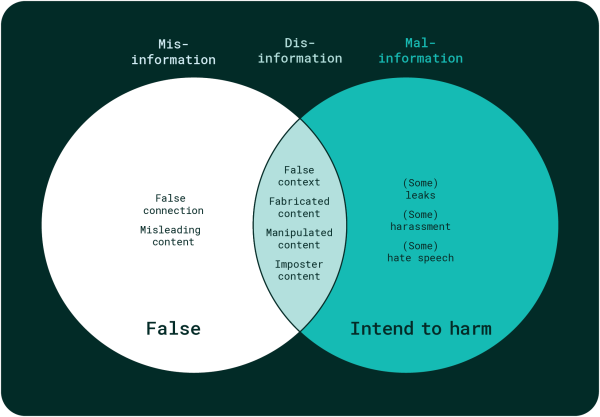It can be hard for young people to know if the information they read, listen to, watch and share online is misleading or even harmful. Below is advice to help you support your whānau to think critically about what is real and what is misinformation online.
What is misinformation?
There are three different kinds of misinformation[1]:

- Misinformation: Information that is false, but not created with the intention of causing harm.
- Disinformation: Information that is false and was created to harm a person, social group, organisation or country.
- Malinformation: Information that is based on reality, used to inflict harm on a person, organisation or country.
These kinds of misinformation can come to us in a lot of different ways.
Not for profit organisation First Draft tells us to watch out for 7 different types of misinformation online(external link):
Talking to your whānau about misinformation
It is important to talk to young people about online safety in order to protect them from misleading and false information online. Below are some tips you can share with your whānau:
Avoid vertical reading(external link)
Making a website or a social media post look legit is easy. A nice logo, a few sources, and some good pictures is all you need to make even the dodgiest information look like it’s coming from experts. Vertical reading is when we take what we read at face value and don’t consider the source of the information.
Encourage lateral reading(external link)
Encourage young people to double-check to make sure the information they are reading, and sharing is true and current. Only use media sources(external link) who have agreed to follow the Media Council Principles(external link).
Concerned about misinformation online?
Sometimes people online are so invested in the misinformation they believe that they make others unsafe by sharing untrue information that could put people’s health at risk or encouraging others to break the law.
When this happens you can report the posts directly to the platform(external link) (i.e. Facebook, TikTok, Instagram) or to Netsafe(external link).
[1] This definition is from https://edoc.coe.int/en/media/7495-information-disorder-toward-an-interdisciplinary-framework-for-research-and-policy-making.html(external link) page 20.